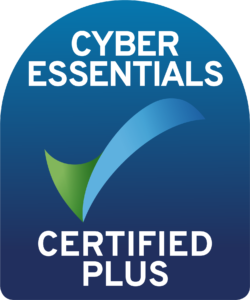Business practices across all industries are becoming more and more fast-paced over time. With this increased pace comes the need for better processes, increased productivity, quicker decision-making and all-round streamlined operations. Microsoft Power Platform is a transformative tool set that can support all of the above, and more. The platform offers solutions for a myriad of business challenges, all of which can be implemented quickly, easily and integrate seamlessly with your existing systems.
But what solutions exactly can it provide? In this blog, we’ll explore the many problems that Microsoft Power Platform can solve, and delve into real-life examples of how businesses can benefit from its capabilities.
What problems does Microsoft Power Platform solve?
There are a multitude of ways that Microsoft Power Platform can be used in the everyday running of your business to solve key challenges and bolster existing processes. From saving time and money, to improving productivity, accessibility and visibility, this powerful set of tools can benefit your organisation greatly.
Time challenges
Through the automation of time-intensive manual processes, Power Platform can help businesses save resources in the form of their employees’ time. By automating administrative operations, you can enable your employees to spend their time in a more valuable way, driving innovation and growth. This also improves productivity, as your workforce’s focus is on the bigger picture rather than less reward-based, but necessary tasks.
Budgetary challenges
By enabling you to develop and deploy custom applications without extensive coding, Microsoft Power Platform’s Power Apps functionality can lead to great cost savings. This enables you to quickly and efficiently implement solutions that are tailored specifically to your business, utilising software that you already have access to and can call on whenever required. This can result in substantial cost reductions compared to traditional software development processes.
Data silos and integration challenges
A challenge commonly faced by businesses is data silos, where information pertaining to the same dataset is spread across various departments and hosted in various systems. The Microsoft Power Platform works to address this by providing seamless data integration, and presenting it in a highly visual way so that more people can make use of valuable insights.
Customisation challenges
When opting for an out-of-the-box solution, it can be difficult to get all of the elements required to meet your needs. This can lead to the use of multiple software, having to navigate from program to program, which can cause tasks to become more time-consuming and can be a frustrating experience for your teams. The Power Platform suite enables you to create truly custom processes, workflow automations and even apps for use internally by your staff, or externally by your customers, clients or end-users. You can inform exactly what is required from the software and build it quickly, so you get exactly what you need from it.
Lack of business intelligence
A lack of business intelligence tools can lead businesses to struggle to gain data-driven insights to inform their overall strategy. Power Platform makes this simple, as Power BI enables you to create informative, visual and engaging analytical reports. These can be used to make strategy refinements, as well as share successes across the business, or externally.
Adapting to change
Adapting quickly with changing market conditions can often be a major challenge for businesses, due to lack of resources or capacity. Power Platform helps to address this due to its low-code nature, enabling you to pivot at pace to provide software solutions, reports or workflows to help you keep up with evolving business requirements and remain competitive.
Lack of visibility
Whether it’s a lack of visibility over critical data insights, or over physical inventory, Power Platform can help you to manage and monitor these key elements in real-time. It can integrate with other systems you use to ensure a streamlined approach, automatically syncing data to provide cohesive, up-to-date insights into key metrics and stock. This solves conflicts of data, overselling stock and more.
Accessibility challenges
The robust security of Power Platform’s applications means that they can be accessed anywhere and at any time, so your employees or end-users can utilise the software and applications they need easily when on-the-go. This helps to lessen bottlenecks and keep the day-to-day operations of your business running smoothly.
Power Platform’s interface and functionality are also intuitively user-friendly, making it accessible to a diverse range of users, including those with varying levels of technical ability. By promoting ease of use and extensive customisation, Microsoft Power Platform contributes to breaking down accessibility barriers, ensuring that individuals with different abilities can actively participate in, and benefit from key business insights and processes.
Reporting issues
When managing multiple datasets, over multiple platforms and with multiple people requiring access to key reporting insights, it can quickly become a minefield to streamline this process and ensure everyone is working cohesively. Power Platform, specifically its Power BI component, makes it easy to gather information, store it in a way that allows for simple access across multiple teams and automating reporting processes for enhanced efficiency and visibility. This also enables individuals and teams to self-solve problems that pertain specifically to them, as they can access key insights near instantaneously.
Training roadblocks
The simplicity that Power Platform provides when it comes to processes, workflows and applications can really help to improve training competency. When things get busy, training can often become the thing that gets pushed to the wayside. However, training is critical to ensure your employees or end-users are empowered with the skills and knowledge they need to do their jobs at the most effective level. By monitoring training results and certifications, and providing quick and easy access to resources and materials, Power Platform can make training processes perform like a well-oiled machine so that you can get the most out of your teams.
Managing waste and practising responsibility
A simple, yet effective solution to an increasing problem, is that the digital, easy-access nature of Power Platform positively contributes to a reduction of waste. This is in varying ways, including by removing reliance on physical papers, over-consumption of energy and waste of resources from time-consuming manual processes. Implementing the suite can help you to run your business in a more sustainable way, in more ways than one.
Lack of collaboration
Collaboration across teams and departments is often a challenge for businesses, particularly with the increasing popularity of many remote and hybrid models of work. Power Platform helps to bridge the gap between your employees by facilitating communication and teamwork by integrating with your existing Microsoft systems, inclusive of Teams, Sharepoint, OneDrive and the Microsoft 365 suite. This enables real-time, live collaboration within key documents so your teams can work collaboratively, whether they’re together in the same room or working remotely.
The above solutions merely scratch the surface of what the Power Platform suite can help you to achieve in your business. It has many more problem-solving capabilities, from increasing efficiency, productivity and timeliness, to driving scalability, enhancing security and empowering inclusion.
What can Microsoft Power Platform be used for?
Now that we’ve highlighted the challenges that can be solved by Microsoft Power Platform, below we’ve provided some tangible, real-life examples of how these challenges have been addressed.
Employee onboarding
Harnessing the power of Microsoft Power Apps, an organisation can create a comprehensive onboarding application to make this process effective and less time-consuming. It can be built with information, checklists, digital forms and more, guiding new employees through each step with ease. The progress of this protocol can be monitored throughout to easily see where a new employee is up to with the onboarding process. You can also make things like setting up user accounts, initiating training modules and providing key documentation, an automated process by combining the components of the Power Platform suite.
Customer service FAQs
If your customer service team is coming up against the same questions time and time again, the intel of these questions can be used to inform an automated chatbot using Microsoft Power Virtual Agents. This can provide invaluable time-saving benefits, as the intelligent chatbot can field questions and give comprehensive answers, dictated by your customer service team without using up that resource to answer the same questions repeatedly.
Organisation-wide reporting
Combining the Power Platform components of Power BI, Power Automate and Power Pages, you can seamlessly manage data, produce engaging, intuitive reports and share these across your organisation securely. The suite ensures robust access management, meaning only those with suitable permission levels can access key areas of the system, to ensure no business insights are fed into the wrong hands. This means those who need access to reports can acquire this seamlessly and work collaboratively across teams to make good use of this data visibility. This can be integrated with Teams, so your employees or end-users can navigate to the reports they need with ease.
Invoice management
Using automated workflow creation, you can create an invoicing process that automatically triggers an invoice to be sent upon completion of a specific task, or by a specific date, and monitor whether this invoice has been paid or is outstanding. This can be done using a template created by your business to ensure consistency across your administration processes and can feedback into Teams for timely updates on the progress of payments for your finance team.
Learn more about Microsoft Power Platform’s capabilities and uses.
Again, these are just a handful of the uses that Power Platform can be put to. There are infinite possibilities to improve processes and create tailored systems and platforms that work meticulously to your business's needs. This can be done at speed and at scale, so whenever a problem arises, you can quickly trigger a solution using Power Platform.
FAQs
Do I need coding skills to use Power Platform?
No, Microsoft Power Platform has been created specifically for low-code use, to empower users with a varying range of technical ability. That said, having some knowledge or experience of code can help to be able to apply Microsoft Power Platoform’s components in very specific, tailored ways. That’s where working with a partner, such as Synergi, can provide invaluable benefits as you can enhance the capability of this platform and make it work even harder for you.
Can Power Platform be integrated into my existing systems?
Yes, Microsoft Power Platform works with a host of both Microsoft-based systems and third-party systems to ensure consistency and compatibility across all of your internal processes. The key here is to empower your existing systems, to save time and resources.
How long does it take to see results with Power Platform?
This really depends on how you are putting Power Platform to use and there is no one set answer that can be given as the opportunities are so vast. We anticipate, however, that when working with a partner such as Synergi, the speed at which results are seen can be improved due to the setup of the system being done in the most appropriate and efficient way possible.
Interested in empowering your business with Microsoft Power Platform? Get in touch with us today to find out more about how we can begin driving efficiencies across your organisation.

Cyber Essentials Certified Plus

Microsoft Solutions Partner

2021
Nintex Partner Award for Customer Success (EMEA)
2020
Nintex Partner Award for Business Transformation
2019
Regional Spotlight Nintex Partner Award

UK Nintex Premier Partner

Crown Commercial Service

Sophos Gold Partner

Datto Blue Diamond Partner

Yubico Gold Partner

Cisco Partner

Mimecast Premier Partner
YES! I want to know more ...
Get in touch with our friendly team of experts. Start your digital transformation journey today.
Call: +44 (0) 191 477 0365
Follow us
Contact us
2 Staithes
The Watermark, Gateshead
NE11 9SN
Call: +44 (0) 191 477 0365
Email: enquiries@teamsynergi.co.uk
- © 2025 Synergi.
- Terms & Conditions
- Privacy Policy
- Cookie Policy
- Sitemap
Design & Build by Mediaworks
